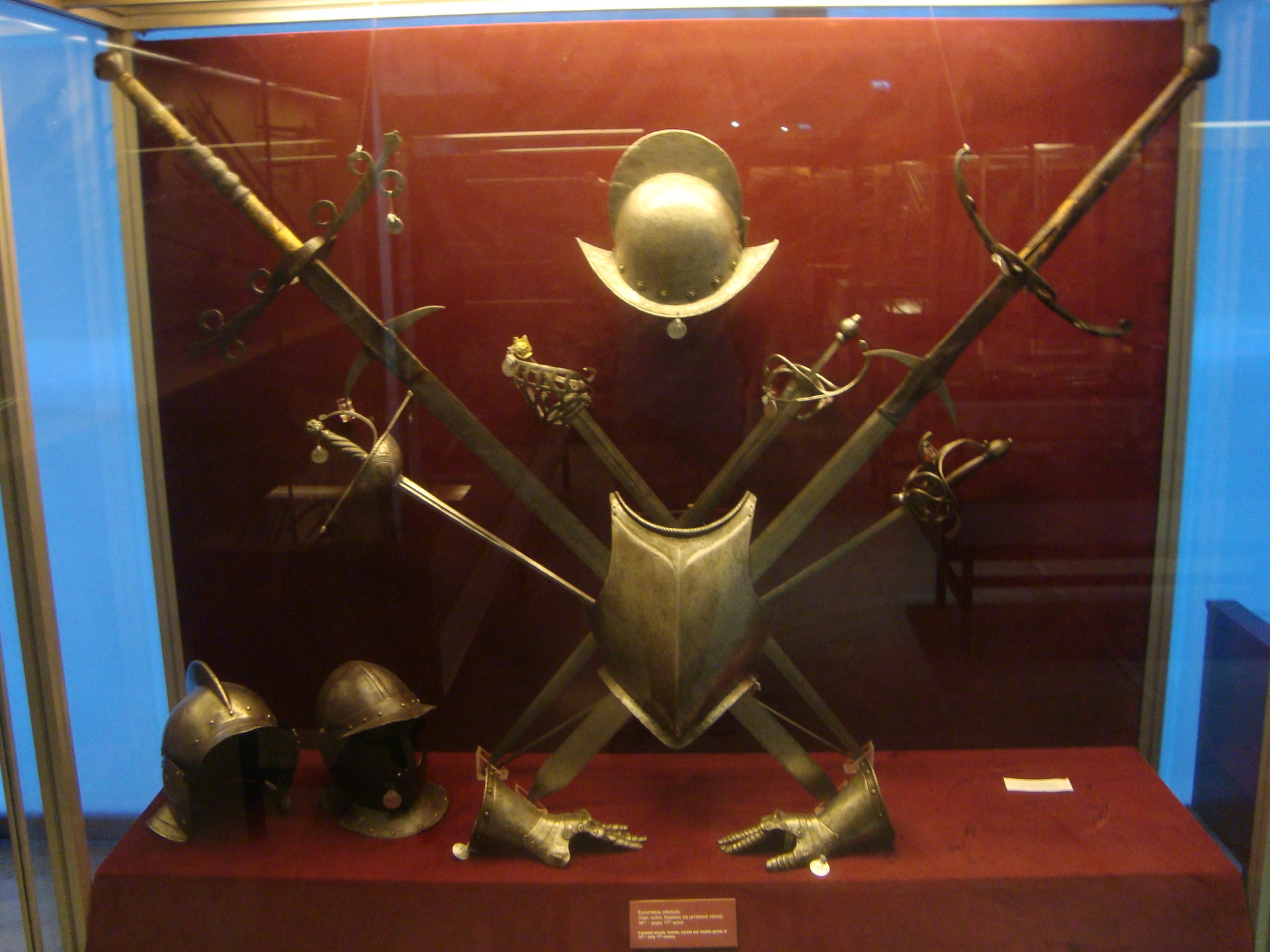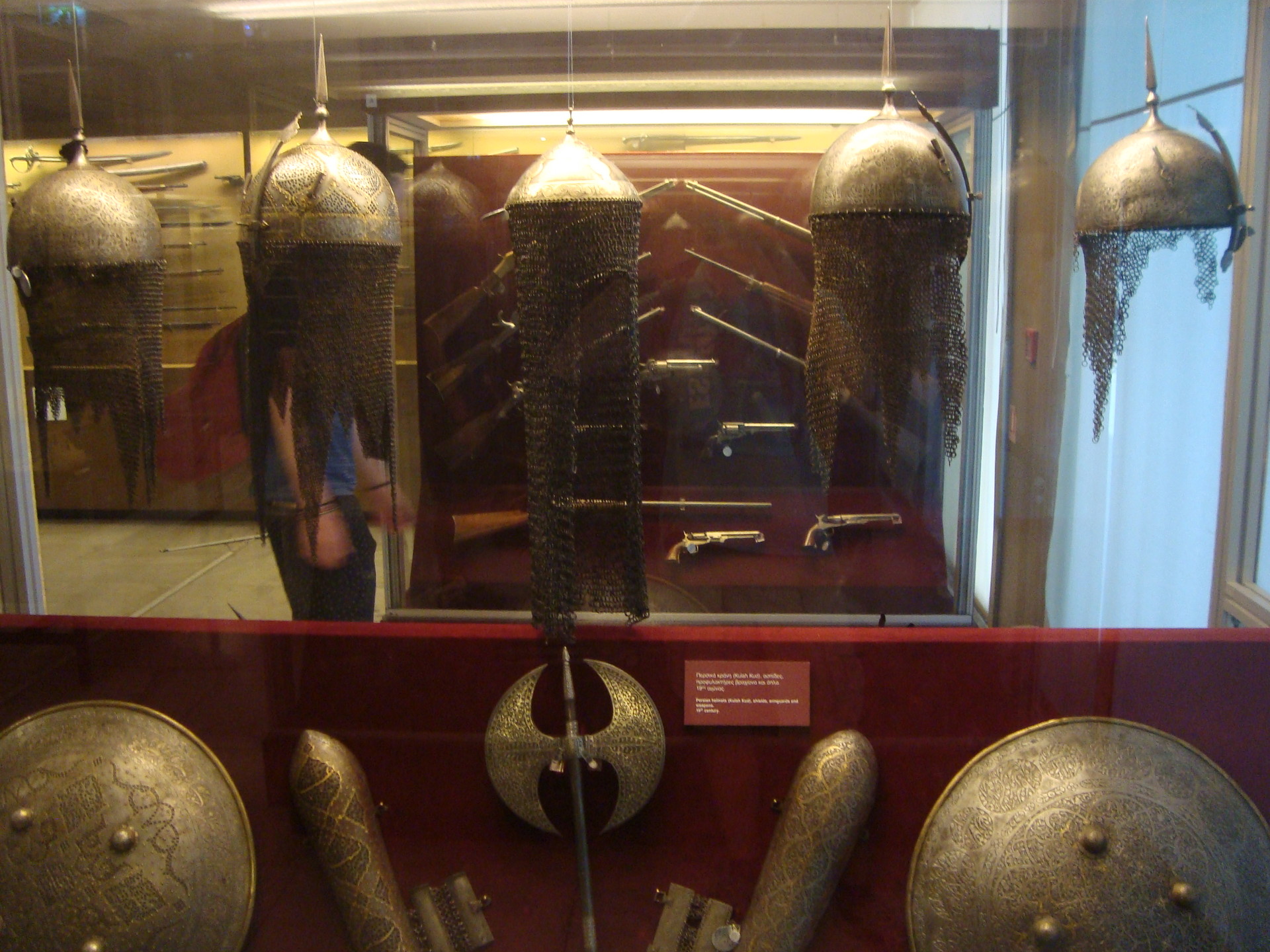War Museum
Greece, along with the rest of Europe, has had a fair share of the burden of war, starting perhaps from the Sea People (Myceneans?) devastating the Eastern Mediterranean in the Bronze Age, over the Trojan War, the defenses against the Persians, infighting between city states, Alexander's expansion, the Roman conquest, barbarian invasions, Saracen raids, misguided crusades by Franks and Venetians, Ottoman conquest and subsequent Turkish rule, War of Independence, two World Wars, NATO missions and so on ... it has left many traces in the country that can be seen in the museum now. However, the collection is international.
NOTE: If you have a student ID, you will get reduced or free entry, depending on the museum --- if you study history or archeology or the classics, you will get free entrance!

Here you can see Spanish footman armour from the 15th century, the time of the reconquista, armadas, and new colonies overseas. It's very heavy, and the two-handed swords were surely effective against lighter infantry.

These are early pistols from around the 16th century used for example by cavalry and Ottoman daggers, richly decorated.

This is a collection of oriental weapons such as curved sabers, heavy war axes and falchion-type curved swords, decorated with gold, alongside with an early gun (heavy and inaccurate) and a special blade to be used defensively when fencing against sword-type weapons.

Here you can see typical heavy Saracen armour, such as round helmets with attached chainmail and round shields, greaves and heavy war axes. This (along with Western weapons and some Samurai armour and katanas) was the repertoire of medieval / early modern weapons. Other eras were also present, as you will see in my next post.
Photo gallery
Want to have your own Erasmus blog?
If you are experiencing living abroad, you're an avid traveller or want to promote the city where you live... create your own blog and share your adventures!
I want to create my Erasmus blog! →



















Comments (0 comments)